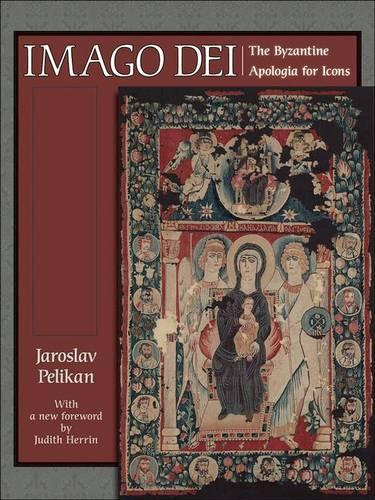
Imago Dei: The Byzantine Apologia for Icons
(Paperback, Revised edition)
Publishing Details
Imago Dei: The Byzantine Apologia for Icons
By (Author) Jaroslav Pelikan
Foreword by Judith Herrin
Princeton University Press
Princeton University Press
5th December 2011
Revised edition
United States
Classifications
General
Non Fiction
Textile arts and artworks
Religious and ceremonial arts
History of religion
246
Physical Properties
Paperback
224
Width 191mm, Height 254mm
652g
Description
Charts the theological defense of icons during the Iconoclastic controversies of the eighth and ninth centuries, whose high point came in AD 787, when the Second Council of Nicaea restored the cult of images in the church. This title demonstrates how the dogmas of the Trinity and the Incarnation eventually provided the basic rationale for images.
Reviews
"[Pelikan's] extraordinary breadth as a historian, not to mention his mastery of the Christian theological traditions, enables him to establish a proper context and a necessary rhetoric for the exploration of Byzantine icons."--John Wesley Cook, Theology Today "[T]his book is genuine cause for celebration. I look forward to recommending it heartily to students and colleagues alike."--Alexander Golitzin, Patristics "The book is beautifully produced and lavishly illustrated. Instructive and pleasing, Imago Dei repays both close reading and close viewing."--Cross Currents "[L]ucid, crisp, inclusive, comprehensive, and articulate."--Daniel J. Sahas, History of Christianity "Pelikan clearly delineates the path the theological defense of icons took during the iconoclastic controversies of the eighth and ninth centuries ... Commendably Pelikan addresses the role played by the other senses in the defense of icons. The fact that touch, taste, audition and smell were acceptable made it easier to argue for the place of the visual."--Theological Studies
Author Bio
Jaroslav Pelikan (1923-2006) was the author of more than thirty books, including the five-volume "Christian Tradition: A History of the Development of Doctrine". In 2004, he received the John W. Kluge Prize for Lifetime Achievement in the Human Sciences.
